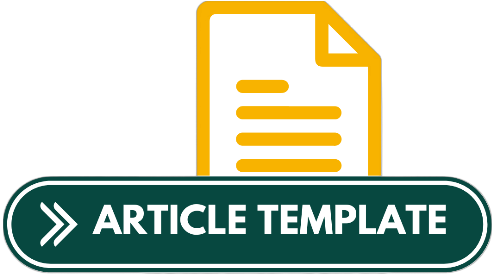Improve Finish Honing of Volume Removal and Surface Roughness with Different Types of Abrasive Material
DOI:
https://doi.org/10.32722/pt.v22i3.5723Abstract
Honing is a method for finishing in manufacturing industries. For the finishing process, a long process would be the challenge. One of the parameters that affected the time of process is volume removal from the surface of the product. The experiment to increase volume removal used several abrasive materials like sandpapers, alumina stone, white alumina stone, and diamond. The quality of the product was determined by the roughness of the surface. The result of this experiment was that the honing process with diamond and white alumina stone had the best volume removal compared to basic honing. The volume removal was raised up to 3 times. The volume removal was 127 mm3/minutes and increased to 344 mm3/minutes for diamond and 382 mm3/minutes for white alumina grinder cup. Quality of surface from honing process with diamond was as good as basic honing with the value of 0.2 µm for basic honing and 0.7 µm for diamond and white alumina has surface roughness much higher than basic honing with the value of 3.2 µm
Downloads
References
S. Gao, C. Yang, J. Xu, H. Su, and Y. Fu, “Modelling and simulation of bore diameter evolution in finish honing,” Procedia Manuf., vol. 26, pp. 462–468, 2018, doi: 10.1016/j.promfg.2018.07.054.
R. Gupta, K. S. Shishodia, and G. S. Sekhon, “Optimization of grinding process parameters using enumeration method,” J. Mater. Process. Technol., vol. 112, no. 1, pp. 63–67, 2001, doi: 10.1016/S0924-0136(01)00546-5.
V. Bogutsky, L. Shron, and E. Yagyaev, “Evaluation of the effect of changing the geometry of the abrasive grains of the grinding wheel on the characteristics of the roughness of the grinded surface,” IOP Conf. Ser. Mater. Sci. Eng., vol. 709, no. 4, 2020, doi: 10.1088/1757-899X/709/4/044117.
J. Palmer, D. Curtis, D. Novovic, and H. Ghadbeigi, “The Influence of Abrasive Grit Morphology on Wheel Topography and Grinding Performance,” Procedia CIRP, vol. 77, no. Hpc, pp. 239–242, 2018, doi: 10.1016/j.procir.2018.09.005.
B. Goeldel, M. El Mansori, and D. Dumur, “Simulation of roughness and surface texture evolution at macroscopic scale during cylinder honing process,” Procedia CIRP, vol. 8, pp. 27–32, 2013, doi: 10.1016/j.procir.2013.06.060.
V. M. Shumyacher, A. V. Slavin, and B. M. Brzhozowski, “On the Mechanism of Interaction of Abrasive Tools and a Workpiece at Grinding,” Procedia Eng., vol. 150, pp. 920–923, 2016, doi: 10.1016/j.proeng.2016.07.059.
F. G. Becker et al., Handbook of Modern Grinding Technology, vol. 7, no. 1. 2015.
P. Sender and I. Buj-Corral, “Influence of Honing Parameters on the Quality of the Machined Parts and Innovations in Honing Processes,” Metals (Basel)., vol. 13, no. 1, pp. 1–35, 2023, doi: 10.3390/met13010140.
I. Buj-Corral, L. Rodero-De-Lamo, and L. Marco-Almagro, “Use of results from honing test machines to determine roughness in industrial honing machines,” J. Manuf. Process., vol. 28, pp. 60–69, 2017, doi: 10.1016/j.jmapro.2017.05.016.
H. Y. S. R. Iwahori A., “The Cutting Mechanism of Honing,” Chem. Pharm. Bull., no. 43, p. 2091, 1970.
R. A. Mezari, R. S. F. Pereira, F. J. P. Sousa, W. L. Weingaertner, and M. C. Fredel, “Wear mechanism and morphologic space in ceramic honing process,” Wear, vol. 362–363, pp. 33–38, 2016, doi: 10.1016/j.wear.2016.05.002.
M. Li, Y. Li, F. Xue, and X. Jing, “A robust and versatile superhydrophobic coating: Wear-resistance study upon sandpaper abrasion,” Appl. Surf. Sci., vol. 480, no. January, pp. 738–748, 2019, doi: 10.1016/j.apsusc.2019.03.001.
P. Chandra, C. R. P. Rao, R. Kiran, and V. R. Kumar, “Influence of Machining Parameter on Cutting Force and Surface Roughness while Turning Alloy Steel,” Mater. Today Proc., vol. 5, no. 5, pp. 11794–11801, 2018, doi: 10.1016/j.matpr.2018.02.149.
M. LI, J. YIN, L. CHE, W. DING, and J. XU, “Influence of alumina abrasive tool wear on ground surface characteristics and corrosion properties of K444 nickel-based superalloy,” Chinese J. Aeronaut., vol. 35, no. 6, pp. 339–351, 2022, doi: 10.1016/j.cja.2021.06.008.
I. Buj Corral, J. V. Calvet, and M. C. Salcedo, “Use of roughness probability parameters to quantify the material removed in plateau-honing,” Int. J. Mach. Tools Manuf., vol. 50, no. 7, pp. 621–629, 2010, doi: 10.1016/j.ijmachtools.2010.02.007.
T. Tang, C. Liu, and R. Wang, “Optimization of honing surface roughness of carburized holes based on gra-rsm,” Machines, vol. 9, no. 11, 2021, doi: 10.3390/machines9110291.
S. Baron et al., “Diamond coatings for advanced cutting tools in honing and grinding,” Procedia CIRP, vol. 108, pp. 589–594, 2022, doi: 10.1016/j.procir.2022.03.093.
Downloads
Published
How to Cite
Issue
Section
License
Copyright (c) 2023 Gilang Awan (Author)

This work is licensed under a Creative Commons Attribution-ShareAlike 4.0 International License.







